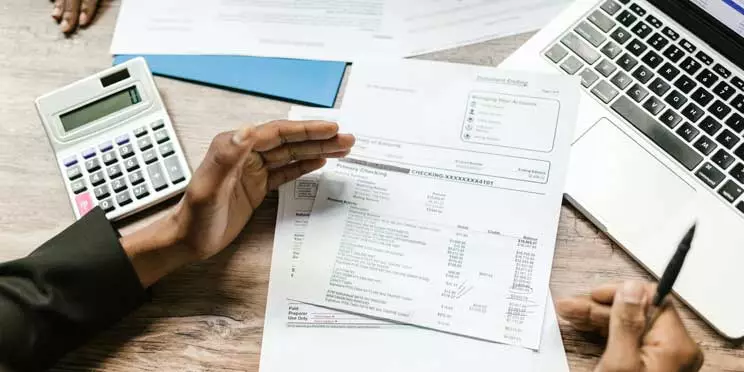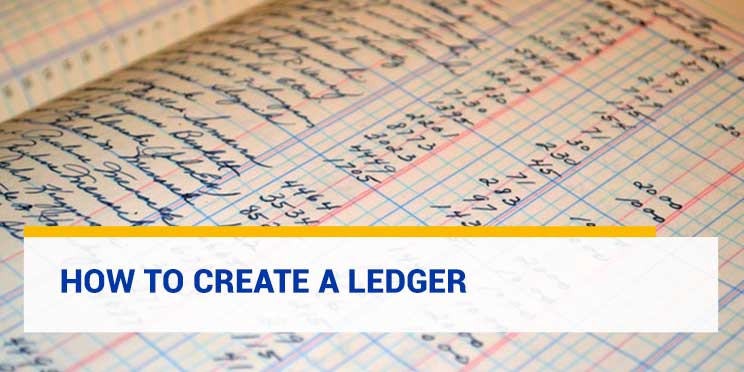One of the important activities in the accounting process is compiling a ledger. How to make a ledger is not too difficult. However, it is very important for you to understand more deeply about the accounts involved.
A ledger contains various accounts for summarizing transactions recorded in journals. Ledger is also known as the book of final entry or the final record stage in accounting.
You need to understand the meaning of ledger first before knowing how to easily create the document. For more detailed information about ledgers and how to create a ledger, keep reading this article to the end.
Understanding and How to Make a Ledger

In general, the general ledger is a term for a ledger or a collection of accounts used in summarizing a transaction into a journal. Ledger is also commonly interpreted as a stage in recording the final summary of data obtained from the general journal.
Ledger contains estimates regarding the summary of the effects of financial transactions due to changes in assets, liabilities, and capital in a company. So, this document is a tool that companies use to record various changes in an account due to financial transactions.
Also read: Examples of General Journals with Defined Terms
The activity of compiling a ledger is called posting. As it is known that the ledger is the transfer of accounts from the general journal, then posting is done after making the general journal. So, in the process of how to create a ledger, you must first make a general journal.
In the process of making ledger documents and trial balances, the accounts are divided into real accounts and nominal accounts. Real accounts are accounts on the balance sheet such as assets, liabilities, equity and liabilities. Meanwhile, the nominal account is an account in the income statement, such as an expense and income account.
Functions, Benefits, and How to Create a Ledger
The function of the ledger in a company is very important. The general ledger is used to summarize all transaction data that has been recorded in the general journal. That’s why it’s necessary to learn how to create a ledger.
It is important to know the method of compiling the ledger, because the general ledger is used as a tool to classify financial data. Ranging from large to small numbers. So you know the difference between all incoming financial data.
Any data that has been recorded in the journals must be classified again in the ledger. This is done to balance the number of accounts contained in the debit and credit columns and as information material when compiling financial statements.
So, it can be said that the function of the accounting ledger in the company’s financial statements is very crucial. In each form of corporate accounting ledger has its own use, depending on each company.
Also read: Definition of Financial Statements, along with the Types and Benefits!
Yourself should be able to adapt it to your company. Well, here are some special functions of the accounting ledger:
- As a process of recording financial transaction data of a business that occurs during the accounting period, both now and in the future.
- As a medium for classifying and recording transaction data codes, where company accounts are the source.
- As validation or proof of any collected data.
- As an update to existing accounts in the general ledger and transaction data files.
- For recording adjustments to the accounts of a company.
- For the preparation of financial statements at the end of the accounting period.
Apart from the six functions of the ledger, there are also several benefits of the ledger. Why do you need to know how to easily set up a ledger? here are some of the benefits:
- Accurate recording of company transaction data.
- In every financial statement preparation, the data will be more easily accounted for at the end of the period.
- Making financial statements is easier if there is a proper and accurate record of transaction data.
- Post every transaction that occurs in the business based on company accounts correctly.
- To balance debits and credits in company accounts.
- Can facilitate the process of making adjusting journals with more accurate transaction data records.
4 Forms of Ledger You Must Know
Before understanding how to set up a ledger, it is also necessary to know the forms of a ledger. There are several forms of these documents, including:
1. T shape
One of the simplest forms of ledger is the T shape. The shape is like a large T. The right side shows the Credit side and the left side shows the Debit side.
The shape and function of this ledger is quite simple, so you can easily use it. In this T-shaped ledger, the account name must be placed on the top left side and the account code should be placed on the top right side of the ledger.
2. Scoring Shape
The controlling form ledger can also be called a two-column form. Skontro itself has the meaning of one side or divided into two, namely right and left or debit and credit.
The steps for making a ledger in the form of a discount are quite easy, but keep details in each transaction record and nominal. This type of ledger has an important function and is often used in companies.
Also read: How to Prepare a Simple Income Statement
3. Single Balance Column Staffle Form
This form of ledger is commonly used in companies that have a large number of transactions. The balance column contained in the Staffle form ledger is a single balance column, which is to write down the results after a debit or credit transaction occurs.
This method of creating a ledger is quite easy, especially if the number of transactions that occur in one period is large.
4. Staffle Column Double Balance
The form of this book resembles the form of a general ledger balance column. However, what distinguishes this form of ledger from the single-column staffle ledger, namely the balance column which is further divided into 2 columns, namely debit and credit columns.
5 Easy Ways to Arrange Ledger

The method of setting up a ledger is quite easy, you just need to follow the steps below.
- Fill in the date of the general ledger posting process. Make sure the date is the same as the date when the recording is made in the general journal.
- Fill in the names of the accounts that affect the ledger of the account into the remarks column. If there is an initial balance, then fill it with the description “initial balance”.
- Fill in the Reference column with the type or name of the journal posted along with the page number. For example, the general journal on page 5, then written abbreviated to JU 05.
- Fill in the debit and credit columns based on the position of the account in the general journal. For example, the cash account in the general journal is debited, so the ledger is also debited.
- Fill in the amount from the addition or subtraction in the balance column, until finally getting the final ledger balance of the account.
Well, that’s the easy way to set up an accounting ledger. After understanding what a ledger is and its functions, it will definitely make it easier for you to make it.
Now the method of setting up ledgers looks a lot easier, doesn’t it? To make it even easier to develop your company, you can take advantage of the Sterling Team.
What is Sterling Team? Our company is an IT and ERP consultant who works to help companies to obtain and create value through the use of information technology.
We have a special application in the financial sector, which can facilitate the performance of ledger document creation. The application is called IREAP POS. Which you can find out more through the following site.
Thus a review of ledgers and how to create a ledger without the hassle. For those of you who are curious about Sterling Steam, you can visit our main page. Congratulations on the process to improve your company to be more valuable.


